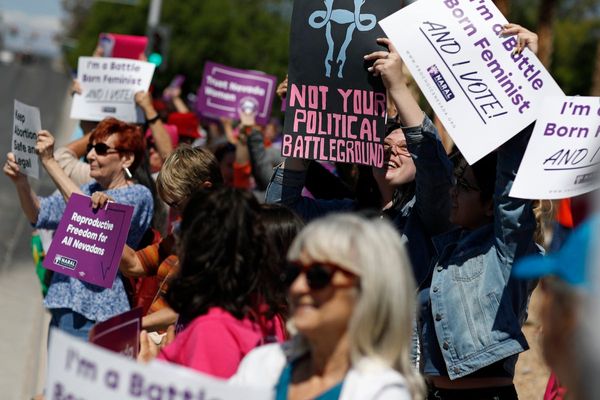
As a leading adviser on disaster recovery, Lucy Easthope has often witnessed the effects of “nuclear incidents, chemical attacks, pandemics, food shortages, fuel shortages, trains and plane crashes, volcanoes and tsunamis”. Yet when she arrives at another scene of carnage, she tells us, she is “always struck by how fine the line between catastrophe and the rest of the world can be”. Her enthralling new book draws back the curtain on the crucial but largely hidden work of planning for emergencies, intervening when the worst happens – and then trying to bring communities back from the brink.
Easthope describes herself as “a child of the indomitable city of Liverpool”. She was deeply affected by the Hillsborough disaster while at school and spent her summer holidays on work experience assignments with her uncle and aunt, both coroners in northern towns. She studied law at university, worked as a researcher on a television drama about Bloody Sunday in Northern Ireland and then took a master’s degree in disaster management.
Since she has “never been afraid of the dead”, Easthope took a job with a disaster management company called Kenyon, which in 2002 was asked by the Ministry of Defence to support the repatriation of any personnel killed during the invasion of Iraq (a sensitive piece of pre-planning at a time when Stop the War marches were still under way). She went on to take an academic position and a job in risk management at Cambridge city council before setting up her own consultancy to advise businesses and government departments. “The work of UK disaster response,” she explains, involves helping to “run investigations, build mortuaries and oversee identification, burials, personal effects and repatriations”, though she has also developed her own specialist niche “in addressing what comes later still... I try to take the affected community a step further and ask what they need in order to face a post-disaster future with assurance”.
On many occasions, Easthope reports, she has “check[ed] into a cheap B&B with my own suitcase as well as items of still-thawing luggage of several dead men”. She has sifted through the poignant personal effects left behind by tragedies. (Among those recovered after the 7/7 terror attack in London were “Tupperware filled with salad” and “the thick paper wodge of a near-to-submission PhD thesis, still being annotated up until the point that the bomb exploded”.)
Elsewhere, Easthope recalls the “viewing rooms” for corpses that “would smell strongly of instant coffee”, since “the embalmer’s facial reconstruction kit was often overwhelmingly biased towards white skin and I was appalled to see that well into the 2000s the way round this was to mix Nescafe granules into the mixture if the deceased was anything other than pink”. And speaking of smells, though there are apparently “some similar compounds in fresh-cut grass, semen, particular vegetables, animal meat and menstrual blood”, nothing quite matches the “assault on your nasal passages” of decomposing bodies. Not only has the experience “put [Easthope] off mushrooms for life”, but the particular cleaning fluid used in mortuaries “has a canny, fateful habit of turning up at the wrong moment”, such as in “the toilets of a concert venue on an anniversary night out”.
Such graphic and disturbing details have their own, rather ghoulish fascination. But they also matter deeply, as Easthope sees it, precisely because we need to think about the ways in which “the treatment of the disaster dead [can] amplify the suffering of families”. Pathologists would sometimes sever the hands of the dead and even “deglove” the outer layer of skin so they can pull this over their own hands to make fingerprinting easier. One police force, we read, went through an unfortunate phase of returning personal effects in a box wrapped in “recycled paper that had been pulped with wild flowers. The ‘artisan’ result was quietly scrapped when families complained that they had been shocked by the flecked paper, thinking that the little imperfections were bits of blood or ash.”
Over the course of her career, and particularly since the 2012 London Olympics, Easthope believes there has been “a slow rot” in British disaster planning, with the focus shifting from a “genuine interest in public perception and resilience in the face of emergencies to ‘optics’. Instead of being asked about what we thought survivors might need in any given scenario or how a public health message might be received, we were now being asked to judge whether we thought the prime minister would be able to weather the storm or have to resign.” Despite a number of pre-Covid planning exercises, “the guidance coming out of central government on how to ready for the dead of pandemic... was confined to a few pages in a PDF concluded by a bizarre diagram for constructing temporary shelving. It looked like the sort of thing that would accompany a flimsy flat-packed wardrobe.”
Much of this is somewhat dispiriting, but When the Dust Settles also includes a striking example of how one community managed to achieve a form of closure after disaster. As part of the mourning process, most relatives want body parts to be identified and returned to them. But it is also important for some sort of end point to be fixed. After a terrible fire at Lac-Mégantic in Canada in 2013, notes Easthope, the coroners reflected on “the stories from [post-9/11] New York, of the sometimes many funerals for the same person as more remains were identified, and were worried about putting their community through that”. Plans for recovery and regeneration would never be effective, it was decided, if “every lorryload of clay was still being sifted in a central location”. So clear timeframes were created and, as a result, some kind of normality, and even dancing in an “identically rebuilt” cafe, has now returned to the town, precisely because the bereaved “have held their funeral and do not wait for a knock at the door to say another minute sample has been found”.
Though laced with bleak humour, this vivid and humane book forces readers to look into some exceptionally dark places. Yet it also makes a powerful case for facing up to the worst head on, if we ever want to find hope and even a measure of healing after disaster.
• When the Dust Settles: Stories of Love, Loss and Hope from an Expert in Disaster by Lucy Easthope is published by Hodder & Stoughton (£20). To support the Guardian and Observer order your copy at guardianbookshop.com. Delivery charges may apply







